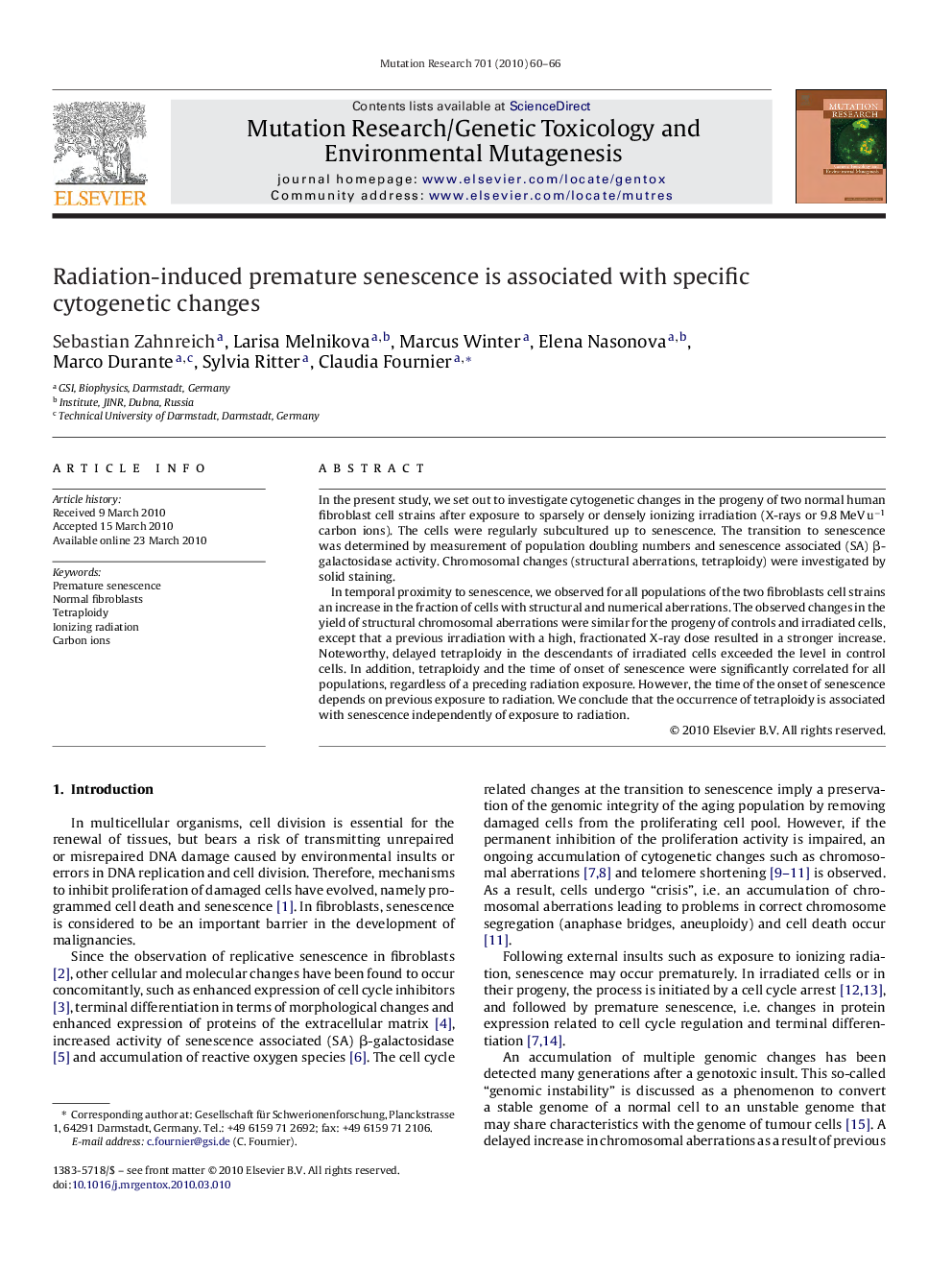| Article ID | Journal | Published Year | Pages | File Type |
|---|---|---|---|---|
| 2148487 | Mutation Research/Genetic Toxicology and Environmental Mutagenesis | 2010 | 7 Pages |
In the present study, we set out to investigate cytogenetic changes in the progeny of two normal human fibroblast cell strains after exposure to sparsely or densely ionizing irradiation (X-rays or 9.8 MeV u−1 carbon ions). The cells were regularly subcultured up to senescence. The transition to senescence was determined by measurement of population doubling numbers and senescence associated (SA) β-galactosidase activity. Chromosomal changes (structural aberrations, tetraploidy) were investigated by solid staining.In temporal proximity to senescence, we observed for all populations of the two fibroblasts cell strains an increase in the fraction of cells with structural and numerical aberrations. The observed changes in the yield of structural chromosomal aberrations were similar for the progeny of controls and irradiated cells, except that a previous irradiation with a high, fractionated X-ray dose resulted in a stronger increase. Noteworthy, delayed tetraploidy in the descendants of irradiated cells exceeded the level in control cells. In addition, tetraploidy and the time of onset of senescence were significantly correlated for all populations, regardless of a preceding radiation exposure. However, the time of the onset of senescence depends on previous exposure to radiation. We conclude that the occurrence of tetraploidy is associated with senescence independently of exposure to radiation.
